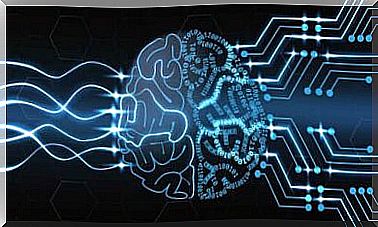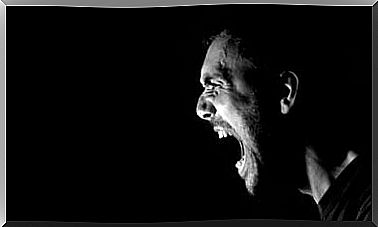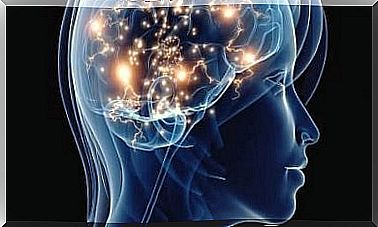Panic Attack And Anxiety Attack: What’s The Difference?

The terms panic attack and anxiety attack are often used interchangeably, but this is a mistake. There are key features that set them apart, although they have several symptoms in common. The two terms are mixed up not only by patients, but by psychology students themselves.
It will be difficult to find the right treatment or develop useful coping skills if the use of terms is not properly differentiated. Therefore, knowing the differences between an anxiety attack and a panic attack is more than a matter of semantics.
Understanding the symptoms of anxiety can more effectively treat the problems underlying seizures. The evolution of these two discomforts is very different, it is therefore essential to differentiate them well.

Anxiety attack and panic attack
An anxiety attack often occurs as a reaction to a particular stressor or concern. You’ve been dreading a layoff for a long time and your boss calls to talk to you, and that’s when your symptoms can skyrocket.
During an anxiety attack, people experience fear and apprehension. Their hearts are pounding and they feel short of breath. But this is very short-lived, and when the stressor goes away, the anxiety attack also goes away.
Panic attack, on the other hand, occurs when there is no real danger or apparent cause. It is not provoked and, in many cases, it is quite unpredictable. During a panic attack, the person is inundated with terror, fear or apprehension.
They may feel like they are going to die, lose control, or have a heart attack. They have a number of physical symptoms that can include chest pain, shortness of breath, dizziness, or nausea.
Are they included in the DSM?
As of the end of 2020, anxiety attack does not fit any diagnostic category as such in the latest edition of the Diagnostic and Statistical Manual of Mental Disorders (DSM-5). An anxiety attack is actually a colloquial term created to describe periods of intense or prolonged anxiety.
Panic attacks are easy to define because there is clinical consensus. Here is an official DSM definition: “A panic attack is a sudden episode of intense fear that triggers severe physical reactions when there is no real danger or apparent cause.”
Symptoms of an anxiety attack
When we talk about an anxiety attack, we are referring to a peak in it that can be prolonged over time – until the stimulus that generates it disappears. We finally find an alternative coping strategy, when the physiological system is exhausted.
It is more serious than just the feeling of anxiety, but as a rule it does not usually reach the level of activation that a panic attack generates. This can last from a few minutes to a few hours, even days and weeks. It usually has one or more of the following symptoms:
- Restlessness, feeling of exhaustion or nervousness.
- Great fatigue in the absence of prolonged or intense physical or mental effort.
- Difficulty concentrating or having a blank mind.
- Irritability.
- Muscle tension.
- Difficulty controlling their problems.
- Sleep problems (difficulty falling or staying asleep, or restless or unsatisfactory sleep).
Therapist Ginger Poag defined an anxiety attack as “a period of apprehension about possible future events”. Sometimes an anxiety attack is the prelude to a panic attack.
Unlike panic attacks, anxiety attacks are not necessarily signs of an anxiety disorder. Anxiety is a natural response to certain stimuli or situations, and anxiety attacks are just more intense forms of this emotion.
Anxiety attacks often result in avoidance patterns or overly cautiousness. For example, a person who has suffered anxiety attacks due to social anxiety may avoid places or situations that have made them anxious.
Symptoms of a panic attack
Serious physical reactions can be triggered during a panic attack. Many people who suffer from it think they are having a heart attack. Some call 911 because they don’t know what they are going through. They usually have at least a few of the following symptoms, which usually last 10 to 15 minutes:
- Feeling of death or imminent danger.
- Fear of losing control or dying.
- Fast and pounding heart rate.
- Sweat.
- Tremors.
- Difficulty breathing or a feeling of tightness in the throat.
- Hot flashes.
- Nausea.
- Abdominal cramp
- Chest pain.
- Headache.
- Dizziness, lightheadedness, or fainting.
- Numbness or tingling.
- Feeling of unreality or detachment.
During panic attacks, people often have an immediate sense of threat. This causes them to ask for help or to try to escape the situation they find themselves in. They may have only one or two panic attacks in their life.
These attacks are usually the result of extreme stress. Repeated panic attacks are usually a symptom of panic disorder. Certain traumatic events can eventually cause a person to develop panic disorder.

Differentiate a panic attack from an anxiety attack
Because the symptoms are so similar, it can be difficult to distinguish between panic attacks and agony attacks. Here are some tips that may help you:
- Panic attacks usually happen without a trigger. Anxiety is a response to a stressor or a perceived threat.
- The symptoms of a panic attack are intense and worrying. They often involve a feeling of “unreality” and detachment. Symptoms of anxiety vary in intensity, from mild to severe.
- Panic attacks appear suddenly, while symptoms of an anxiety attack gradually become more intense over a matter of minutes, hours, or days.
- Panic attacks go away after a few minutes, while symptoms of anxiety may persist for a long time.
Keeping in mind the difference between a panic attack and an anxiety attack is essential, as many patients believe they are having anxiety attacks when what they are really suffering from is a disorder. panic. This confusion is the reason why many people do not go to therapy.
On the other hand, confusing one with the other during the differential diagnosis can lead, in the worst case, to the person becoming dependent on a drug that they do not need. For this reason, it is essential that healthcare professionals also understand the differences and work diligently.










